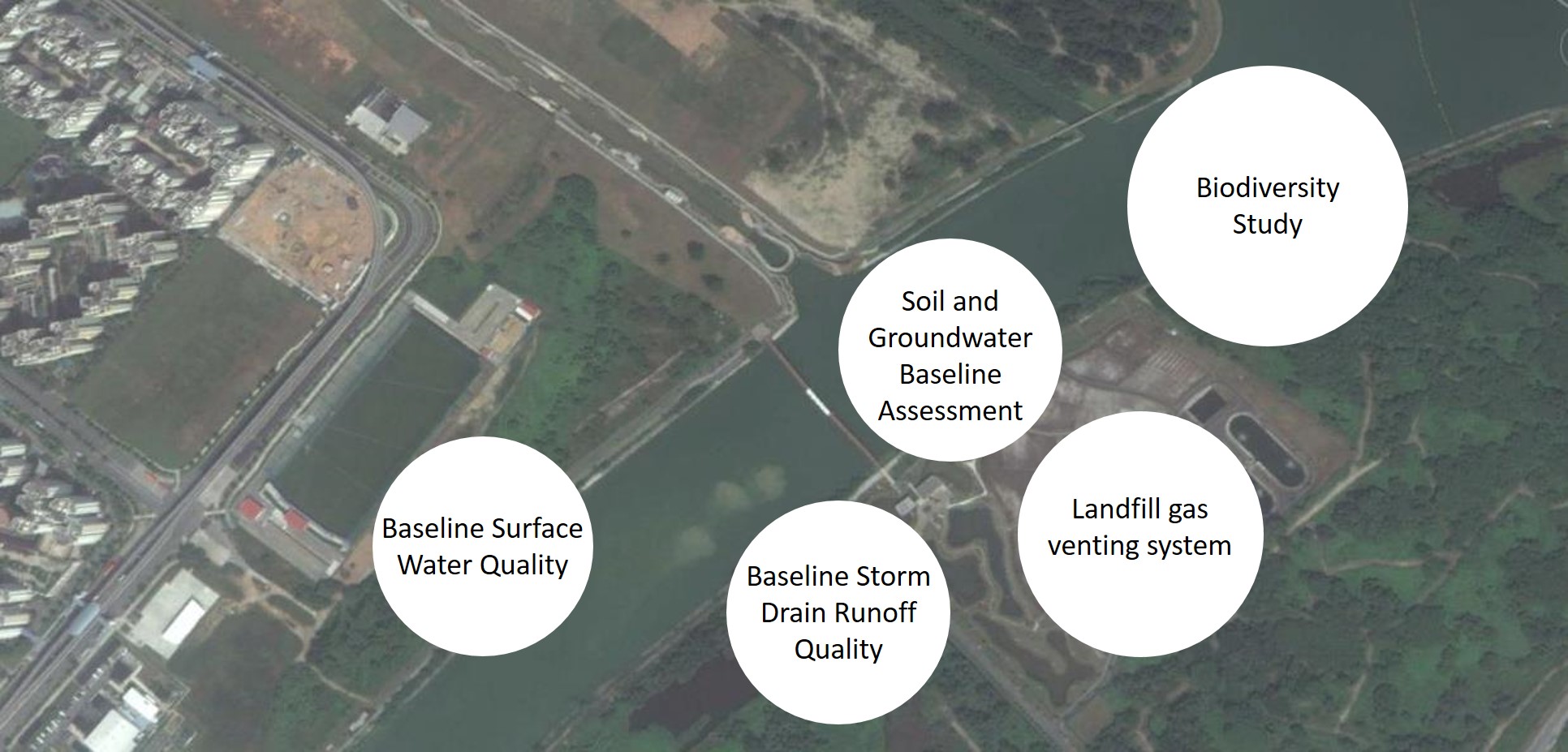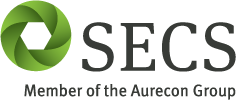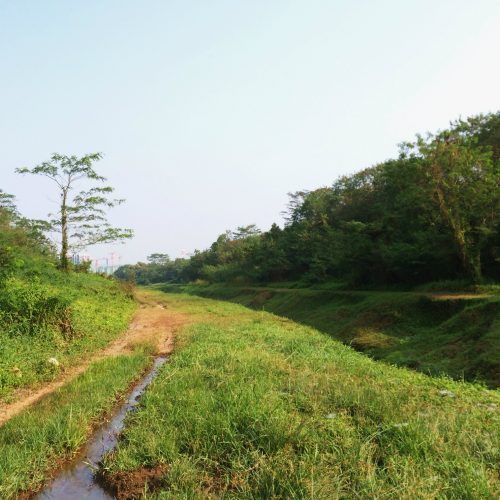Overview
SECS was contracted to consult on the expansion of an expressway – the complication was that the expressway would pass through a former landfill, and the contractor was required to excavate and dispose of waste prior to construction.
The Tampines and Lorong Halus Landfill spans roughly 234 hectares along a 6.5 kilometre stretch of Sungei Serangoon. The landfill began operations in 1970 with the Old Tampines Dumping Ground and ceased operations in 1999. The landfill area can be divided into four phases of dumping:
- Old Tampines Dumping Ground (1970 to 1974) – Uncontrolled dumping consisting largely of municipal waste which will eventually decompose/putrefy, and construction/demolition materials which will remain largely unchanged.
- Phase 1 Dumping Ground (1974 to 1975) – Mixture of both municipal and construction/demolition debris
- Phase 2 Dumping Ground (1976 to 1983) – Mostly municipal waste, but increasing amount of construction and demolition debris
- Phase 3 Dumping Ground (1983 to 1989) – Mixture of municipal and construction/demolition debris but would have more construction debris as municipal waste was being incinerated at this point in time
- Phase 4 Dumping Ground (1990 to 1999) – Waste broken up into cells that would contain a mixture of municipal and construction debris.
After the landfill was closed, part of the landfill was converted into a nature reserve and wildlife sanctuary.

Our Approach
Our Approach
- We took approached the project in three ways:
Biodiversity Study (read more) - Soil, groundwater, and surface water baseline assessment
- Landfill gas venting system
EBS Assessment Criteria
The Dutch Target and Intervention Values (DIV) were selected for the screening of soil and groundwater – this is in line with Singapore’s National Environment Agency Code of Practice on Pollution Control:
Standards and Technical Guidelines for Assessment and Remediation of SitesThe following standards and technical guidelines may be adopted for site assessmentand remediation of contaminated sites:(a) Dutch Guidelines for Soil Protection(b) ASTM E 1527 – 00 Standard Practice for Environmental Site Assessments: Phase I Environmental Site Assessment Process
(c) ASTM E 1903 -97 Standard Guide for Environmental Site Assessments: Phase II Environmental Site Assessment Process(d) ASTM E1739 – 95e1 Standard Guide for Risk – Based Corrective Action Applied at Petroleum Release Sites(e) Guidelines for Assessing and Managing Petroleum Hydrocarbon Contaminated Sites in New Zealand
and any other standards or technical guidelines acceptable to PCD.
In general, chemicals with concentrations exceeding the DIV are indicative of contamination, but are based on the more conservative residential land use model and potable groundwater. The residential model assumes exposure over 70 years, 350 days a year, whilst the industrial/commercial model assumes 25 years, 250 days a year.
We also compared results to the State of Indiana Screening Levels for Soil Industrial Use and Excavation Workers, and the State of Florida Groundwater Cleanup Target Levels (GCTL) was chosen for low yield/low quality (non-potable) groundwater. Parameters for measuring quality of wastewater/sewerage included Biochemical Oxygen Demand (BOD), Total Ammoniacal Nitrogen (TAN), and Total Organic Carbons (TOC).
Results and Benefits
Whilst some values exceeded the DIV, most were well below the US State of Indiana Screening Levels for Industrial Land Use. Water quality indicators COD and TAN were also elevated, as is characteristic of leachate from inactive landfills, but not a human health risk for workers with PPE and proper hygiene.
Based on the results of the Environmental Baseline Study and our recommendations, the waste from Lorong Halus was reclassified from landfill waste to recyclable municipal waste. This resulted in significant cost savings: landfill waste collection costs between SGD200 to SGD300 per tonne, as compared to municipal waste collection which costs SGD50 a ton.

